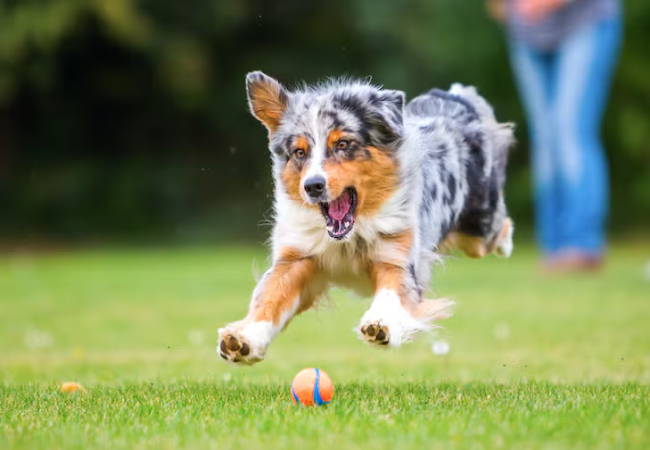Dog Exercise 2025: Vet-Approved Guide to How Much They Need 🐕✨

In this article
Dog Exercise 2025: Vet-Approved Guide to How Much They Need 🐕✨
By Dr. Duncan Houston BVSc
Keeping your dog active is essential for their physical health, mental stimulation, and overall well-being. But how much exercise is enough? The answer depends on several factors, including your dog’s breed, age, size, weight, and health. Let’s break it down so you can create the perfect exercise plan for your furry friend.
🏃♂️ Exercise Recommendations
In general, most dogs benefit from at least one walk per day lasting 30 minutes to an hour. However, some breeds and individuals need more activity to stay healthy and happy. Regular exercise helps prevent obesity, supports joint health, and reduces behavioral issues caused by boredom or pent-up energy.
🐾 Factors That Influence Exercise Needs
1. Breed
Different breeds have varying energy levels:
-
High-energy breeds like Border Collies, Australian Shepherds, and Jack Russell Terriers require intense physical and mental stimulation. They may need 2–3 walks a day, plus playtime or agility training.
-
Moderate-energy breeds like Labradors or Beagles need daily walks and some interactive play.
-
Low-energy breeds like Bulldogs or Pugs often do well with shorter walks and light play.
Understanding your dog’s natural energy level will help you tailor their exercise routine.
2. Age
-
Puppies: Young dogs have lots of energy but can tire quickly. Short bursts of exercise multiple times a day, combined with play and training, are ideal. Avoid overly strenuous activity that could harm developing joints.
-
Adult dogs: Most adult dogs thrive with 30–60 minutes of exercise daily, tailored to their breed and energy level.
-
Senior dogs: Older dogs may need less intense, shorter walks, swimming, or gentle play to protect their joints while keeping them active.
3. Size
-
Large breeds like Golden Retrievers or German Shepherds often need longer walks or more vigorous activity.
-
Small breeds like Chihuahuas or Dachshunds may be content with shorter walks and indoor play sessions.
Exercise should be appropriate for your dog’s size and physical capabilities.
4. Weight and Health
-
Overweight dogs: Extra exercise can help with weight loss, but it should be gradual to avoid injury. Combine physical activity with a balanced diet for the best results.
-
Dogs with health issues: Dogs with arthritis, heart problems, or respiratory conditions may need modified or low-impact activities like swimming or leash walks.
🧠 Mental Exercise Matters Too
Physical activity alone isn’t enough. Dogs also need mental stimulation to stay happy and prevent destructive behavior. Mental exercise can include:
-
Training sessions (teaching commands or tricks)
-
Interactive toys and puzzles
-
Scent games (hiding treats or toys)
-
Playdates or socialization with other dogs
A well-stimulated dog is less likely to develop behavioral issues and is generally happier.
✅ Tips for a Balanced Exercise Routine
-
Mix physical and mental activities.
-
Adjust the intensity based on breed, age, and health.
-
Monitor your dog for signs of fatigue or discomfort.
-
Consult your veterinarian for personalized recommendations.
Final Thoughts
There’s no one-size-fits-all exercise plan for dogs. By understanding your dog’s breed, age, size, weight, and health, and combining physical and mental stimulation, you can ensure your furry friend stays healthy, happy, and well-behaved.



